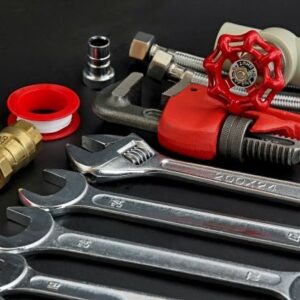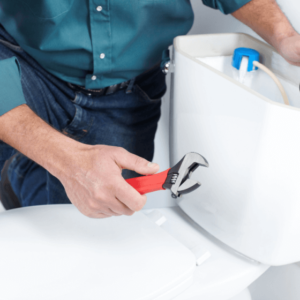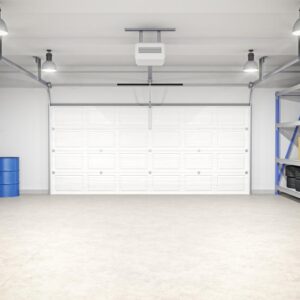Your roof was designed to protect your home from bad weather, not invite it in. But age, the elements and wear & tear can damage your roof, allowing water to seep inside. If your roof does spring a leak, you’ve got to spring into action — left unchecked, a leaky roof can cause severe water damage and can even destroy the structure of your home. Unless the damage is extreme, you can tackle the job yourself and fall is the perfect time to do it.
Looking for Leaks
How do you know you have a leaky roof? Here are the telltale signs: ceiling water stains or sagging, peeling paint or wallpaper, mold, wet spots, standing water or damp odors, especially in confined areas, such as hallways. The first step is finding where the leak is coming from, which is not always the area located directly above the damage.
Helpful Tips
If you discover a minor leak, tape a piece of string nearby and place a bucket underneath. The water should flow down the string into the bucket, instead of onto your floor. This will prevent further damage to your home while you make repairs.
For heavier leaks, drill a hole in the ceiling to allow water to escape. Place a bucket underneath to catch the flow. This will keep the ceiling from becoming saturated with water—and possibly collapsing.
Make it a habit to regularly inspect your home for leaks or water damage so you can detect problems before they get worse.
Up on the Roof
Water can travel long distances before it enters your home, so you may not be able to readily locate its source. If so, you’ll have to visually examine your roof. Remember, working on a roof can be dangerous, so always heed the following safety precautions:
Safety Alerts!
Never walk on a wet roof—it’s slippery, and if there’s water damage, sections may even buckle under your weight. Make sure the day is sunny and the roof is completely dry, especially if it has previously rained.
Make sure your ladder is secure before you climb.
Always use safety ropes, and if the roof is steep, use a ladder framework to anchor yourself securely.
Wear rubber-soled shoes for traction.
Check the location of power lines to avoid injury.
Once you climb up on the roof, look for missing or cracked, chipped, warped or missing shingles or shakes, especially in the area directly above the indoor water damage. Clear any leaves or other debris that may be obstructing water flow.
One of the most common sources of leaks is the metal flashing—the material used to seal chimneys, skylights, vents or vent pipes from water damage. Inspect all flashing, the areas around the antenna and satellite dish and any points where two surfaces intersect.
Helpful Tips
Inspect flashing every year as part of your home maintenance program.
If you can’t see visible damage to the shingles or flashing in the leak area, the problem may be caused by shingle deterioration or damaged flashing, which require the services of a professional roofer.
Now that you’ve discovered where the leaks are coming from, it’s time to begin repairs. Start with the flashing, then check the sections below for helpful tips for repairing or replacing shingle, flat and shake roofs.
Simple Metal Flashing Repairs
- If the caulk around chimney flashing or dormers is damaged or missing, use a caulking gun to fill the joints with roof cement.
- To repair cracked or worn roof cement along joints, reseal by applying a generous amount of roof cement with a putty knife.
- Cover exposed nails with roof cement as well.
Shingle Roofs
Shingles can usually be repaired quickly and easily. If any have curled away from the roof, reattach them with a caulking gun filled with asphalt roof cement or compound. Use a dollop of cement in each corner and press firmly into place. If shingles are loose, missing, rotten or damaged, they must be replaced. Here’s how:
Step 1: Remove Damaged Shingles
To reach and remove a damaged shingle, lift the surrounding shingles and remove any visible or protruding nails with a pry bar (if nails aren’t sticking up, they can remain in place). Slide out the shingle and use a scraper to remove any remaining roof cement.
Step 2: Shape the New Shingle
Use a sharp utility knife to slightly round out the back corners of each new shingle. This will make it easier to slide it into place.
Helpful Tip
If you’ll be replacing entire rows of shingles, you’ll only need to round the back corners of the shingles in the top row, to better fit the row above.
Step 3: Slide in the New Shingle
Fit the new shingle into the space, positioning its back edge under the shingles in the row above. Be sure to align the shingle’s front edges with the shingles that are next to it on both sides.
Step 4: Secure the Shingle
Raise the corners of the overlapping shingles and hammer a 6d galvanized roofing nail through each corner to fasten. Cover the nail heads with roof cement and smooth with a trowel, overlapping the shingle edges.
Use the same technique to replace ridge shingles, which are the triangular shingles located along the roof’s peak (you can coat the back of each new ridge shingle with roof cement for added security). Slide the new shingle into place, overlapping its edges along the ridge and over the shingles next to it on both sides.
Wooden Shake Roofs
Making simple repairs to a wooden shake roof is similar to the technique for repairing a shingle roof, with a few tricky additions. Here’s what you do:
Step 1: Remove the Damaged Shake
Split the damaged shake with a hammer and a sharp chisel, slanting the chisel at the same angle as the roof’s pitch (be careful not to gouge the surrounding shakes). Remove all traces of the damaged shake.
Step 2: Remove Nails
Shakes are stiff and brittle, so it’s difficult to pry out existing nails. Instead, use a hacksaw to cut the exposed nail heads as far down as possible.
Helpful Tips
Wrap electrical tape around one end of the hacksaw blade to protect your fingers.
Don’t attempt to cut nail heads if you can’t reach them without causing damage to the surrounding shakes. Step 5 below describes how to work around them.
Step 3: Cut the New Shake
Measure the gap left by the damaged shake, and use a fine-tooth hacksaw to cut the new shake about 3/8 inch smaller.
Helpful Tip
Be sure to allow the 3/8-inch clearance—the shake will swell in size when it rains.
Step 4: Install the New Shake
If you were able to cut off nails that secured the damaged shake, follow this step. Otherwise, skip to Step 5). Slide the new shake up into place, aligning its top edge under the overlapping shakes above. Nail it into place with two galvanized roofing nails, one at each side of the exposed top edge. Skip to Step 6.
Step 5: Notch the New Shake Around Nails
If you weren’t able to cut off the nails, make the shake fit around them. Push the shake up into the space, pushing hard enough to make an indentation by the old nails. Use a coping saw to carefully cut slots at the marked points. If possible, clamp shake in vise so it doesn’t split. Slide notched shake into place, and nail it with two roofing nails as in the previous step.
Helpful Tip
To prevent the shake from splitting when you saw, clamp it in place with a vise.
Step 6: Set & Seal
Cover the nail heads with nail set, then trowel on a layer of caulking compound to seal.
Flat Roofs
Flat roofs are comprised of layers of tar and roofing felt, which occasionally becomes damaged and leaks. In most cases, your ceiling will show visible damage directly underneath the leak, making it easy to detect the source. When you find it, use rags to absorb any lingering water and allow the damaged area to dry. Brush away any gravel or debris, then check the felt for blistered areas where the felt layers have separated. Follow the following steps to make repairs:
Step 1: Slice the Blister
With a sharp utility knife, slice the blister down the middle. Be careful not to cut the undamaged felt underneath.
Step 2: Drain
Squeeze out any visible water and dry with rags.
Step 3: Dry
If the area is saturated, let the area dry completely.
Safety Alert!
Never walk on a wet roof—it’s slippery, and if there’s water damage, it may even buckle under your weight. Make sure the day is sunny and the roof is completely dry, especially if it has previously rained.
Step 4: Cement the Bottom
With a trowel, apply a generous coat of roof cement to the bottom edges of the loose felt, and press firmly.
Step 5: Nail
Hammer a row of 6d galvanized roofing nails along each side of the slit.
Step 6: Cement the Top
Cover the nail heads, as well as the entire blistered area, with a thick layer of roof cement.
Good job! Your roof is patched up and ready to weather whatever Mother Nature has to throw at it.
Project Shopping List
Here’s what you’ll need to complete this project successfully.
- String
- Bucket
- Power drill
- Ladder
- Safety rope
- Caulking gun
- Roof cement
- Putty knife
- Safety goggles
- Pry bar
- Paint scraper
- Replacement shingle(s)
- Utility knife
- 6d Galvanized roofing nails
- Hammer
- Asphalt roof cement
- Trowel
- Hammer
- Chisel
- Hacksaw
- Electrical tape
- Tape measure
- Replacement shake(s)
- Coping saw
- Clamp
- Vise
- Nail set
- Caulking compound
- Trowel
- Clean rags
- Brush
- Asphalt roof cement or compound












